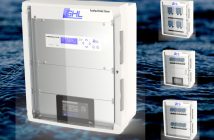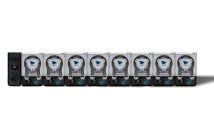The now infamous water flow rate study conducted on various propeller based water pumps by Sanford, Straka, and Joshi that was published in Advanced Aquarist a short time back caused quite a commotion in the aquarium community. The initial goal of the study was only to examine a possible way to accurately measure water flow rates from propeller based water pumps, but the results of the test had a far reaching impact on the aquarium community. The study implied that Tunze pumps significantly underperformed in relation to other water pumps on the market, also missing their advertised flow rates by as much as 56% for their largest model, the Tunze Stream 6305. Tunze was given the data before the results were published, did a little testing of their own, and concluded that the results were accurate for the specific testing equipment and methodologies used to determine the flow rates in the original study. Despite owning up to the results of the study published in Advanced Aquarist, Tunze also expressed doubts in both the method and instrument used to arrive at the flow numbers and set off to perform a test of their own, which is described in detail in the video above.
In the video, multiple Tunze and EcoTech Marine pumps are individually tested in a 150-gallon aquarium using a handful of different methods, though EcoTech’s name is never used. Instead, they are labeled only as “competitor”. Before the testing is demonstrated though, we get an explanation about the different types of water flow, the importance of turbulence and how it affects flow rate measurements, an explanation on Tunze’s more laminar flow, and what test methods are being used in this latest water pump study. The first experiment consists of injecting a dye into the water on the intake side of each pump and watching how far it travels and how quickly it is dispersed. The second test is similar, but instead of injecting dye, an air pump feeds bubbles into the intake of each pump. Both of these tests demonstrate the more laminar water movement produced by the Tunze Stream and nanostream pumps, while also showing how much more turbulent the pumps of the “competitor” are. Because of these differences, the Tunze pumps are shown to push water a far greater distance.
The third test performed by Tunze is accomplished through the use of a RCI Clima AIR 5. It is a propeller-based flow meter that showed slightly different results of the other water flow study, but overall is in agreement with those results. Tunze didn’t use this device to measure flow rates though, but to instead show that the turbulent flow was present and to demonstrate the quality of the flow. They also go on to state that the propeller based flow meters are subject to drag and resistance, and will inherently show lower flow rates.
The last thing we wanted to discuss from this video is the displaying of the unreleased Tunze 6095 nanostream’s flow pattern. The 6095 is compared to a VorTech MP40, and the two pumps look nearly identical on the dye injection test, at least in terms of dye distribution throughout the test aquarium. And this is the type of flow pattern Tunze’s was aiming for with this new pump…something more broad and turbulent while still moving a significant amount of water.
The final conclusion to be drawn from this test and the one published in Advanced Aquarist is that flow rates measured in gallons per hour (or any other velocity for that matter) are essentially useless. Flow measuring methods are not accurate and are influenced by a myriad of factors that have yet to be tested by any company. Water flow is extraordinarily complex, especially when things like rocks, glass, and other stationary objects get in the way and divert the flow. The main goal for any reefkeeper though is to do a visual inspection of how the water flows in their tanks, making sure that detritus is suspended in the water column and the corals are getting enough flow to deliver nutrients and effectively remove metabolic byproducts. In closing, I also want to emphasize that this flow test and the flow study conducted by Sanford, Straka, and Joshi should not be taken at face value. Both studies were performed by people with skin in the game, meaning neither one can be truly objective as the performers of the test are also the manufacturers. That being said, we desperately need independent testing agencies that can measure manufacturers’ claims and give aquarium hobbyists the proper knowledge to make informed choices.





